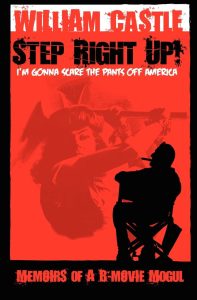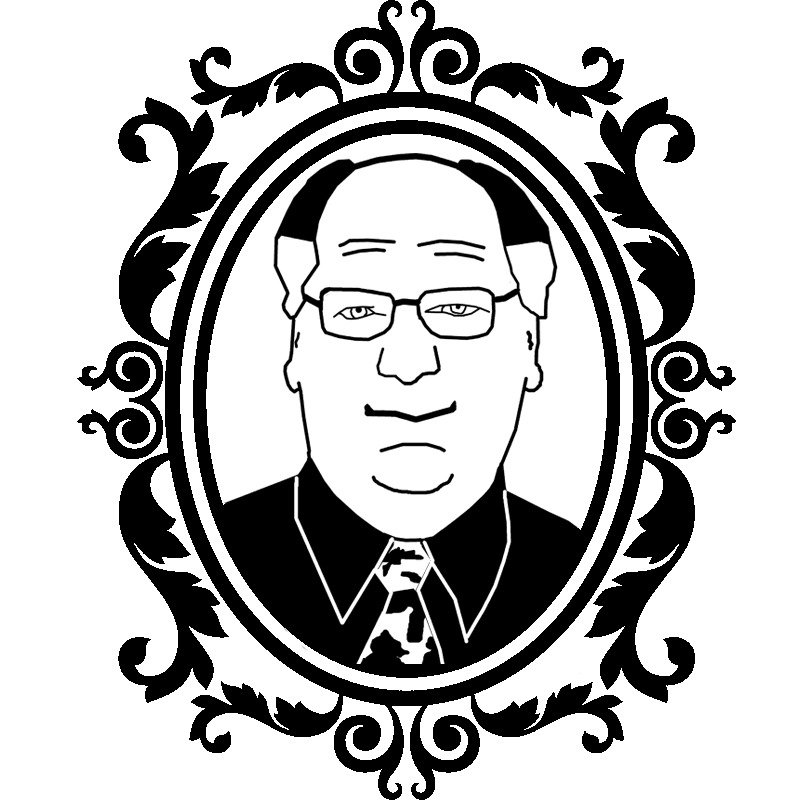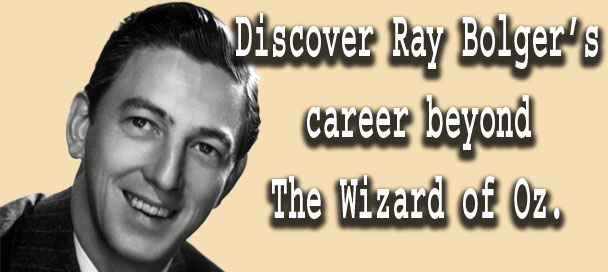🎬 William Castle: The King of Gimmicks and Master of the Macabre

William Castle promoting Bug wit a prop cockroach on his arm
William Castle didn’t just make movies he made events. Best known for his low-budget horror thrillers and outrageous promotional gimmicks, Castle built a reputation as one of Hollywood’s most flamboyant showmen. Whether wiring theater seats to buzz or handing out fake insurance policies in case audiences died of fright, Castle understood that scaring people was only part of the fun how you scared them mattered just as much.
William Castle was a master of gimmick-driven horror films, best remembered for directing cult classics like "House on Haunted Hill" and "The Tingler." A showman as much as a filmmaker, he revolutionized low-budget cinema with inventive promotions that terrified and thrilled 1950s audiences.
But behind the carnival barker persona was a savvy craftsman and tireless worker. Before he was Hollywood’s master of gimmicks, Castle cut his teeth on Broadway. In the 1930s, he worked as a prop master for Orson Welles’ legendary Mercury Theatre production of Julius Caesar, even sourcing real swords for the assassination scene, according to a 1938 New York Post theater log. That experience taught him the power of authenticity and illusion two themes that would run through his entire career.
Castle’s knack for storytelling extended offstage as well. In 1935, he ghostwrote banter for a magician’s act at the Roxy Theatre in New York, sharpening his understanding of audience rhythm and misdirection. He didn’t just watch how performers worked a crowd he studied it, dissected it, and filed it away for later use. These early experiences helped forge the showmanship that would define his brand of cinematic spectacle.
By the time he moved into film, Castle had developed a unique blend of hucksterism and heart. He wasn’t afraid to stretch a budget or hustle for a location. For Hollywood Story (1951), he famously charmed the caretaker of Charlie Chaplin’s former studio into letting him use it for free, earning him a nod in a 1952 Hollywood Reporter item. That same energy carried into his home, where he held informal acting workshops and mentored young talent like Richard Conte who credited Castle’s guidance with helping him land the lead in The Whistler (1944).
👶 Early Life
William Castle was born William Schloss Jr. on April 24, 1914, in New York City. Orphaned at the age of 11 after the sudden death of both parents, Castle was raised by his older sister. The experience of losing his parents so young would shape both his resilience and his appetite for reinvention. He later changed his surname to “Castle” in hopes of carving out a more marketable identity for show business a decision that would prove prophetic.
Fascinated by film from an early age, Castle skipped school to spend hours in Manhattan movie houses, absorbing the pacing, lighting, and emotional rhythms of early talkies. At 15, he ran away to join a stock theater company, where he began doing everything from sweeping floors to understudying lead roles. Though his formal education was brief, Castle studied audiences more closely than any classroom could have taught him. He knew instinctively that getting a reaction was more important than getting applause.
By age 19, William Castle had directed his first stage play. He quickly gained a reputation as a resourceful, fearless hustler never afraid to promote a show by hanging his own posters or embellishing the truth for a good headline. His flair for marketing and love of old-world theatrics would become his trademarks, but even in these early days, Castle understood the fine balance between entertainment and illusion.
Explore the Biographies of Iconic Celebrities
In 1960, William Castle invented a fake contest for 13 Ghosts, offering a trip to a “haunted” Scottish castle, detailed in a 1960 Motion Picture Daily ad. The stunt, never fulfilled, drew 10,000 entries and boosted ticket sales.
🎬 Film Career
The Horror Director Way Ahead Of His Time: William Castle
William Castle began his film career in the 1940s as a contract director at Columbia Pictures, helming dozens of B-movies that trained him in efficiency, timing, and audience engagement. He quickly made a name for himself directing entries in The Whistler film series, starring Richard Dix and later Richard Conte who credited Castle’s home acting workshops with preparing him for the role. These noir-style films gave Castle the foundation for suspense-building techniques he would later apply with greater flair in the horror genre.
Throughout the late 1940s and early 1950s, Castle moved fluidly between Westerns, crime dramas, and historical biopics. He directed Johnny Stool Pigeon (1949) with Dan Duryea and Howard Duff, and Cave of Outlaws (1951) starring Macdonald Carey. Though these films were often modest in scope, Castle’s resourcefulness stood out.
But it was in the mid-1950s that Castle discovered his true niche horror. Inspired by Alfred Hitchcock’s success with Psycho, Castle leaned fully into the genre, but with his own carnival-style twist. His first big hit came with Macabre (1958), for which he offered every ticket-buyer a $1,000 life insurance policy in case they died of fright. The stunt worked, and the film was a surprise box office success.
Castle followed it with a string of cult classics, each more outrageous than the last. House on Haunted Hill (1959), starring Vincent Price, featured “Emergo” a plastic skeleton that flew over the audience on a wire during key scenes. In The Tingler (1959), also with Price, Castle installed vibrating motors under theater seats for what he called “Percepto,” shocking patrons mid-scare. He reused this kind of interactive showmanship in 13 Ghosts (1960), which came with “Ghost Viewer” glasses so audiences could choose whether to see or not see the spirits on screen.
Other memorable films include Homicidal (1961), a gender-bending thriller designed to rival Psycho, and Mr. Sardonicus (1961), which featured a “Punishment Poll” allowing the audience to vote on the villain’s fate. Though most theaters only ever screened the version where Sardonicus suffered, the illusion of choice thrilled moviegoers. Castle wasn’t just making movies he was creating experiences.
He collaborated with a wide range of actors across his horror run, including Patricia Breslin, Charles Herbert, Rosemary La Planche, and Jean Arless. His ability to coax expressive, exaggerated performances fit the theatrical tone of his films, which blurred the line between screen horror and live spook show. These weren’t just B-movies they were full-fledged spectacles.
In 1968, Castle took on his most ambitious project producing Rosemary’s Baby. Although he originally intended to direct it himself, the studio insisted on hiring Roman Polanski. Castle settled for a producer credit and a cameo appearance, but his fingerprint is all over the film’s paranoid, creeping dread. It was a massive critical and commercial hit, earning Ruth Gordon an Oscar and cementing the horror genre’s mainstream credibility. Ironically, it was Castle’s biggest success and the one film he didn’t direct.
After Rosemary’s Baby, Castle returned to directing with Shanks (1974), a bizarre but heartfelt film starring mime Marcel Marceau, and his final film, Bug (1975), about mutant cockroaches with incendiary powers. Though these late projects lacked the box office magic of his earlier efforts, they retained his commitment to spectacle and ingenuity.
Behind the scenes, William Castle also gave back in quieter ways. In 1974, he anonymously financed Nightmare at Fort Courage, a student film at USC, demonstrating a generous spirit not often associated with his larger-than-life image. He also penned a monthly “Monster Mania” column in 1976, where he shared DIY horror effects and behind-the-curtain tricks with aspiring filmmakers.
By the end of his career, William Castle had directed or produced over 60 films and created an indelible legacy as the showman of schlock. His movies may have been made on shoestring budgets, but they were delivered with boundless creativity, marketing brilliance, and an unshakable belief in the magic of the movies.
William Castle designed a glow-in-the-dark skeleton prop for House on Haunted Hill (1959) himself, sketching it in a 1958 notebook later sold at a 1980 auction, per a Los Angeles Times report, showing his hands-on creativity.
🎪 STEP RIGHT UP!...I'm Gonna Scare the Pants Off America – Paperback by William Castle
Legendary horror showman William Castle lifts the curtain on his outrageous career in this witty, behind-the-scenes memoir. From buzzing theater seats to insuring moviegoers against fright-related death, Castle’s life story is as wild as his films.

Cover art for STEP RIGHT UP!...I'm Gonna Scare the Pants Off America Paperback –
by William Castle
In STEP RIGHT UP!...I'm Gonna Scare the Pants Off America, Castle recounts his rise from Broadway backstage roles to cult film director and producer of Rosemary’s Baby. He details the creation of his legendary gimmicks for The Tingler, House on Haunted Hill, Macabre, and Homicidal with humor and heart.
Book Highlights:
- 📚 276 pages of outrageous true Hollywood stories
- 🎥 Behind-the-scenes insights on Castle’s iconic horror films
- 🎭 Anecdotes from working with Vincent Price, Roman Polanski & more
- 🔧 DIY film trick tips, theatrical stunts, and publicity schemes
Part autobiography, part showbiz how-to this is a must-read for horror fans, movie buffs, and lovers of old-school Hollywood spectacle.
🕊️ Later Years
In the 1970s, as the golden era of theatrical gimmicks faded, William Castle found himself less in demand as a director but still passionate about filmmaking. He shifted focus to mentoring younger talent and quietly investing in low-budget projects, often anonymously. One such act was his funding of the USC student short Nightmare at Fort Courage in 1974, a generous gesture that went uncredited until noted in a 1975 university newsletter. Though he was no longer the man rigging skeletons to fly across theaters, Castle never lost his love for the show.
Castle also turned to writing, contributing horror tips and low-budget special effects advice in a fun monthly column titled Monster Mania, which ran briefly in 1976. He took delight in demystifying his tricks like how red-dyed corn syrup made the perfect stage blood sharing the same DIY enthusiasm with fans that had once made him a box office hitmaker. Even in semi-retirement, he remained a master of mischief and movie magic.
On May 31, 1977, William Castle died of a heart attack at age 63. While his name may not have graced A-list studio marquees, he left behind a catalog of unforgettable genre films, a legacy of innovation, and a trail of tingling theater seats. For those who experienced his movies the way they were meant to be seen in packed theaters, laughing and screaming together Castle was more than a filmmaker. He was the ringleader of cinematic fun.
🏆 Legacy
William Castle’s legacy is that of a true Hollywood original a filmmaker who turned low-budget horror into high-energy spectacle. He didn’t just direct movies; he engineered experiences, pioneering interactive film gimmicks that turned moviegoing into a participatory thrill ride. From buzzing seats in The Tingler to flying skeletons in House on Haunted Hill, Castle redefined what it meant to entertain an audience, proving that creativity could trump budget when paired with showmanship.
Though his films were often dismissed by critics during his lifetime, William Castle’s influence grew with time. He inspired generations of directors, including John Waters, Joe Dante, and Robert Zemeckis, who all cited his flair for fun and fear. Zemeckis would later produce remakes of Castle’s classics like House on Haunted Hill and 13 Ghosts, reviving Castle’s brand of horror for modern audiences. Even Alfred Hitchcock, in a rare moment of professional curiosity, reportedly took note of Castle’s promotional brilliance when planning Psycho.
Beyond the gimmicks and scares, William Castle’s legacy includes a generous spirit and a deep love for film. He championed young talent, funded indie projects in secret, and wrote candidly about his tricks in hopes of inspiring the next wave of genre filmmakers. Today, Castle is remembered not just as the king of gimmick horror, but as a joyful provocateur who believed movies should be fun, communal, and just a little bit outrageous.
🗣️ Why They Still Matter
William Castle’s outrageous showmanship helped define the spirit of mid-century horror. His blend of horror, humor, and interactive marketing lives on in filmmakers like John Waters, Joe Dante, and even modern genre conventions. While his budgets were small, his imagination was limitless earning him a cult following that grows with every Halloween season.
Further Reading & Resources
📖 10 Best William Castle Movies - List Challenges
📰 William Castle | Horror Film Director & Producer | Britannica

ML Lamp is the owner of Kilroy Was Here. After his 20 years of working in Las Vegas in the entertainment promotions field, Mr. Lamp retired in 2002 from his job to pursue his passion for collectibles. Now as a guest speaker and author he’s living the dream, and sharing his warmth with You.





